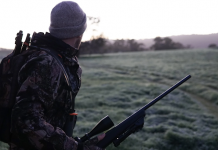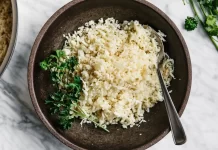Hunting is one of the most popular sports in the US — there were over 15 million hunting licenses issued in the US in 2020 alone.
But, if you’ve never been hunting before and you’re looking to get into the sport, you might not be entirely sure what goes into the planning process. While hunting is fun, there can be a relatively high barrier to entry, and newcomers have a lot to learn.
This guide can help you avoid some of the hiccups that green hunters often encounter while planning their first DIY hunts. We’ll break down each step in the planning process to help you lay the groundwork for a fun, successful, and (most importantly) safe hunt this season.
Table of Contents
#1 Ensure Your License Is Up to Date
If you’re planning an upcoming hunt, your first order of business is getting licensed. Depending on your state, new licensees may have to:
- Apply for a license in person or online
- Pay a licensing fee
- Pass a hunter’s or firearms safety course
- Apply for a tag lottery (depending on your target species)
If you’re already licensed but haven’t used your license in the last twelve months, double-check that it’s still valid before planning any hunts.
And remember that, should you choose to travel out of state to hunt, you’ll likely need a license from that state to be eligible to fill a tag. Read requirements for in-state and out-of-state licensure very carefully, or talk to a state wildlife official to make sure you’re in compliance.
#2 Read Local Regulations
Once you’ve ironed out your licensing, it’s time for more fine print. Read the hunting regulations in your chosen hunting area very carefully. Pay especially close attention to:
- Allowed species – No matter where you’re hunting, it likely won’t be open season for all species in the area. Check that your target species is open during the time window when you’d like to hunt and read up on any species identification tips if needed.
- Weapon regulations – Some weapons are prohibited on public land or during certain times of year. Make sure that your chosen weapon is legal in your chosen hunting area at your ideal time. If you choose to hunt with an air gun in a state forest, for instance, make sure that these weapons are allowed before making further plans.
#3 Choose a Hunting Location
Once you have a general idea of where you’d like to hunt, you’ve sorted out the licensing, and you’ve read the local regulations in that area, it’s time to choose a more specific hunting location.
Perhaps the most important consideration to make ahead of your trip is your hunting land type:
- Public lands are open to other hunters. You might encounter at least one other hunter while you’re on the property; public land is an excellent option for new hunters, newcomers to an area, and experienced hunters alike.
- Private lands are private property where you’ve been given express permission to hunt by the property owner. If you’ve been invited to hunt on a friend’s hunting lease, for instance, this would be private land.
#4 Gather Materials
Your location will impact the types of materials you’ll need. So, once you’ve nailed down a venue, it’s time to make your packing list and gather any items that you’re missing.
As travel kits go, hunting packs aren’t too complicated. The following list covers most of what you’ll need for a successful trip:
- Camouflage and non-hunting clothes
- Your weapon of choice
- Ammunition
- Food and water
- A blaze orange garment (local regulations will stipulate requirements for wearing orange)
- Butchering tools, including knives, latex gloves, and freezer bags
- Accessories like calls, blinds, decoys, or range finders
#5 Invite Other Hunters
One of the reasons why hunting is such a popular sport is because it can be as social as you’d like it to be. Most new hunters (and many veteran hunters) prefer to hunt with a buddy for both:
- Safety – The adage is true: there’s safety in numbers. If you incur an injury during your hunt, your buddy can help get you the help you need.
- Companionship – Hunting can be exciting, but when you’re not lining up a shot or tracking your kill, it can get boring. Taking a friend with you can ease the loneliness of sitting in a stand for hours without any action.
#6 Choose a Hunting Spot
Once you’ve finalized the general location, your hunting site, and your roster, choose a specific place on your intended property where you’ll sit (or a walking route, if you’re stalking a species).
If you’re new to hunting, we recommend choosing a spot that’s relatively close to your car or camp. If anything goes wrong, you won’t be far from help.
If you’re experienced (or if you’ve hunted in a specific area before), you might be a better match for a more remote hunting spot.
In some cases, you might not be able to choose where you sit until you arrive on hunting day. If you show up to hunt on public land and there’s already a hunter in your ideal spot, for instance, you’ll need a Plan B.
#7 Study Up on Your Target Species
One of the best tips veteran hunters typically offer to newcomers is to study your target species to learn about their:
- Signature identifying characteristics
- Behavior
- Mating seasons
- Eating patterns
- Lifespan
- Sleep schedules
- Range (this can change throughout the year)
- Favorite grazing and sleeping locations
Learning as much as you can about your target species will help you organize and improve every other aspect of your hunt — from your supply list to your stand location.
Consider, for instance, that your target species is whitetail deer. Once you discover that whitetail season typically overlaps with mating season, that deer can adopt a more nocturnal sleep pattern, and feed aggressively to maintain their energy levels during hunting seasons, you might be pickier about your time, date, and location choices.
#8 Enjoy Your Hunt
Once the planning process is complete, you’ve packed your gear, and you’re sitting in your blind waiting for your target species to slink through the trees, you’ve accomplished a significant goal: planning your own DIY hunting experience.
As your hunt progresses, don’t forget to:
- Take photos and videos to document the experience
- Mark your final stand location or walking path on a map and save it for future reference
- Chat with other hunters or wildlife officials you might encounter on your trip
- Field-dress or butcher your harvest, leaving as little waste as possible in the field
- Report your harvest as required by local regulations
But, most importantly, enjoy the time you get to spend outdoors. Keep an eye out for wildlife, watch the clouds roll by, and relish in the cool breeze. Most people have limited opportunities to take time out of their busy schedules and truly enjoy nature — make the most of this experience.
Hunting: An Outdoor DIY Adventure
Whether you’re a first-time hunter or a seasoned veteran, planning a DIY hunt takes work, determination, and attention to detail. But, once you’re sitting in your stand and lining up your shot, you’ll see that all of the planning and effort were worth the opportunity to experience the great outdoors.



















